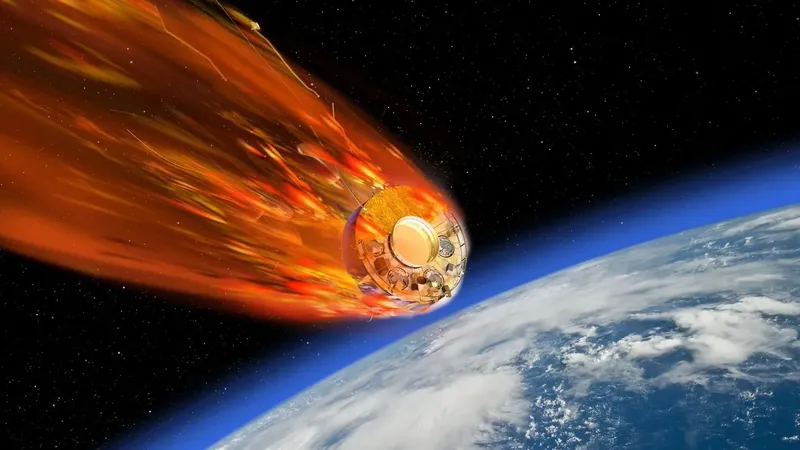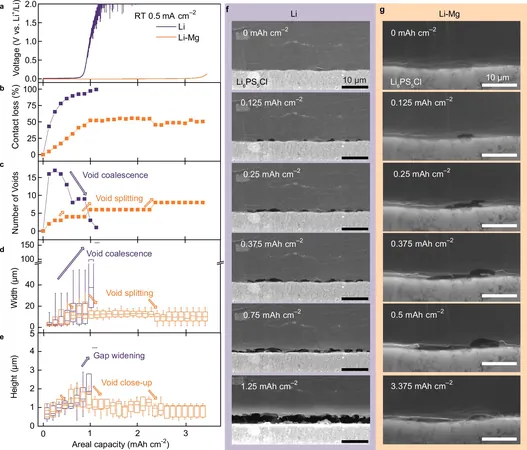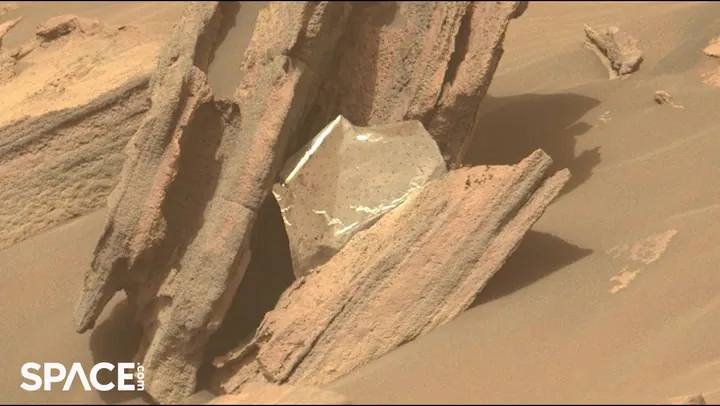
Sky-High Chases: Scientists Reveal Secrets of Satellite Reentry and Air Pollution!
2025-05-05
Author: Mei
A Daring Sky Chase for Science!
In an exhilarating pursuit, a team of European scientists captured the fiery descent of a falling spacecraft, uncovering vital information about the atmospheric demise of retired satellites. This groundbreaking mission provided key insights into how satellite air pollution affects our planet's atmosphere.
The Fall of Salsa: A Race Against Time
Last September, the scientists boarded a private jet on Easter Island, tracking the atmospheric reentry of Salsa, one of the European Space Agency's (ESA) Cluster satellites. Equipped with 26 high-tech cameras, they aimed to document this fleeting event across various light wavelengths.
Revelations from the Skies!
Their preliminary findings, unveiled earlier this April at the European Conference on Space Debris in Bonn, Germany, highlighted an extraordinary event. The satellite's rapid burn-up—lasting barely 50 seconds—transpired above the Pacific Ocean, right before noon on September 8, 2024. Despite challenges posed by blinding daylight, the team gleaned crucial data on the hidden processes of satellite incineration.
Understanding the Mystery of Satellite Incineration
Stefan Löhle, a researcher from the University of Stuttgart, remarked, "The event was fainter than anticipated," suggesting that the satellite's fragmentation may have produced slower-moving debris and less radiation than expected. Following an initial breakup at 50 miles (80 kilometers), they recorded fragments for 25 seconds before losing sight of them. Remarkably, they identified chemical compounds like lithium, potassium, and aluminum released during the event.
A Growing Concern for Earth's Atmosphere
As the number of satellites rises, so do concerns about the air pollution they cause upon reentry. The main material of satellites—aluminum—burns to form aluminum oxide, which can contribute to ozone depletion and disrupt the Earth's thermal balance.
More Satellites, More Risks!
With approximately three satellites plummeting to Earth daily—most notably from SpaceX's Starlink megaconstellation—the buildup of byproducts in the atmosphere poses a significant risk. Unfortunately, the data on these atmospheric impacts remain scarce, as traditional monitoring methods fall short.
Pioneering Aerial Measurements
This airborne mission, a rare endeavor to document satellite reentries, has so far tracked only five such events. Researchers are keen to unravel the unknowns surrounding satellite fragmentation. Löhle emphasized the urgency: "We need to understand what happens during fragmentation to ensure nothing falls on people's heads, and to assess the potential threat to Earth's atmosphere."
Surviving Remnants!
The data indicates that the titanium fuel tanks from Cluster Salsa possibly survived the reentry and fell into the Pacific. This finding is crucial given the frequency of satellite reentries.
What's Next for Scientists?
As the team continues to analyze their findings, they aim to align these observations with computer models to deepen their understanding of satellite fragmentation and its atmospheric interactions. Plans are already in motion to gather further data during the reentries of Salsa’s sibling satellites—Rumba, Tango, and Samba—in 2025 and 2026.
The Ongoing Challenge of Sunlight
However, like Salsa, these future reentries will also take place during daylight, posing challenges for obtaining detailed chemical measurements. The researchers remain determined to uncover how much aluminum turns into aerosol during reentry and what that means for the planet's health.






 Brasil (PT)
Brasil (PT)
 Canada (EN)
Canada (EN)
 Chile (ES)
Chile (ES)
 Česko (CS)
Česko (CS)
 대한민국 (KO)
대한민국 (KO)
 España (ES)
España (ES)
 France (FR)
France (FR)
 Hong Kong (EN)
Hong Kong (EN)
 Italia (IT)
Italia (IT)
 日本 (JA)
日本 (JA)
 Magyarország (HU)
Magyarország (HU)
 Norge (NO)
Norge (NO)
 Polska (PL)
Polska (PL)
 Schweiz (DE)
Schweiz (DE)
 Singapore (EN)
Singapore (EN)
 Sverige (SV)
Sverige (SV)
 Suomi (FI)
Suomi (FI)
 Türkiye (TR)
Türkiye (TR)
 الإمارات العربية المتحدة (AR)
الإمارات العربية المتحدة (AR)